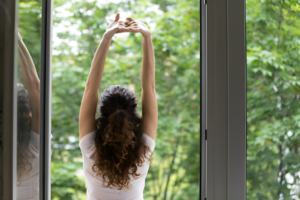Incorporating daylight into building design is a powerful strategy to improve the sustainability of the building, and enhance health and well-being of the occupants. By considering factors such as the building orientation, the design and placement of openings, and the light management systems, architects and designers can create spaces that are not only energy-efficient, but also vibrant and inspiring. The thoughtful use of daylight will plays a crucial role in shaping the built environment:
Architectural Aesthetics
Daylighting enhances the aesthetic appeal of a building by bringing out the true colours and textures of interior spaces, making them appear more attractive and inviting. Daylight introduces depth and shadow, enriching the visual experience within any room. It creates a sense of quality and spaciousness, highlighting architectural details and enhancing the overall design.
Energy Efficiency
The use of daylight leads to significant energy savings by reducing the need for electric lighting during daylight hours. Integrating daylight into the building design lowers electricity consumption and operational costs, contributing to lower energy bills, both for home owners and for businesses and organisations.
Psychological and Physiological Benefits
Exposure to daylight improves mood, reduces stress, and regulates circadian rhythms, which are crucial for maintaining a healthy sleep-wake cycle. Proper alignment of these rhythms contributes to better sleep quality, leading to more rested and energised individuals. This is particularly important in built environments like homes, schools, and hospitals, where health and well-being are a top priority.
Safety in the Workplace
Adequate daylighting reduces the likelihood of accidents by providing better visibility, enabling employees to navigate their surroundings with greater ease and awareness. Enhanced visibility decreases the risk of slips, trips, and falls, which are among the most common workplace accidents. Moreover, exposure to daylight promotes alertness, reducing the occurrence of fatigue-related incidents.
Performance and Productivity in the Workplace
In workplaces and educational facilities, daylight enhances productivity and performance. Research has shown that individuals working or studying in well-lit environments tend to be more focused, motivated, and alert. They exhibit improved cognitive function and enhanced creativity. Employees often report higher job satisfaction and increased job performance, resulting in enhanced overall productivity.
Boosting Retail Sales
Daylight serves as a powerful catalyst for increasing sales within the retail sector. The strategic use of dayight enhances the shopping experience, captivating customers and inticing them to explore products with greater interest. A well-designed interior that incorporates daylight creates a welcoming atmosphere, drawing in foot traffic and encouraging prolonged stays, which results in more opportunities for sales conversions, and higher customer satisfaction.
As energy costs rise and the amount of time we spend indoors reaches record highs, integrating daylighting into the building design becomes essential for creating more sustainable and healthier spaces. By embracing daylighting strategies, we can shape buildings that reduce our energy bills and enhance our health and wellbeing, paving the way for a more sustainable future.




